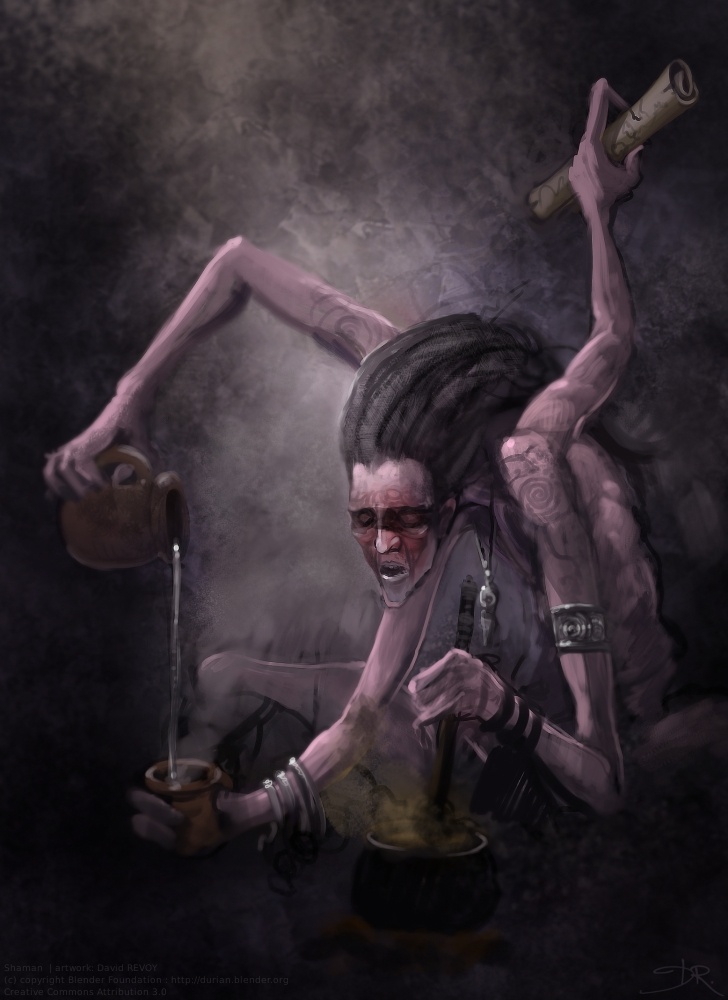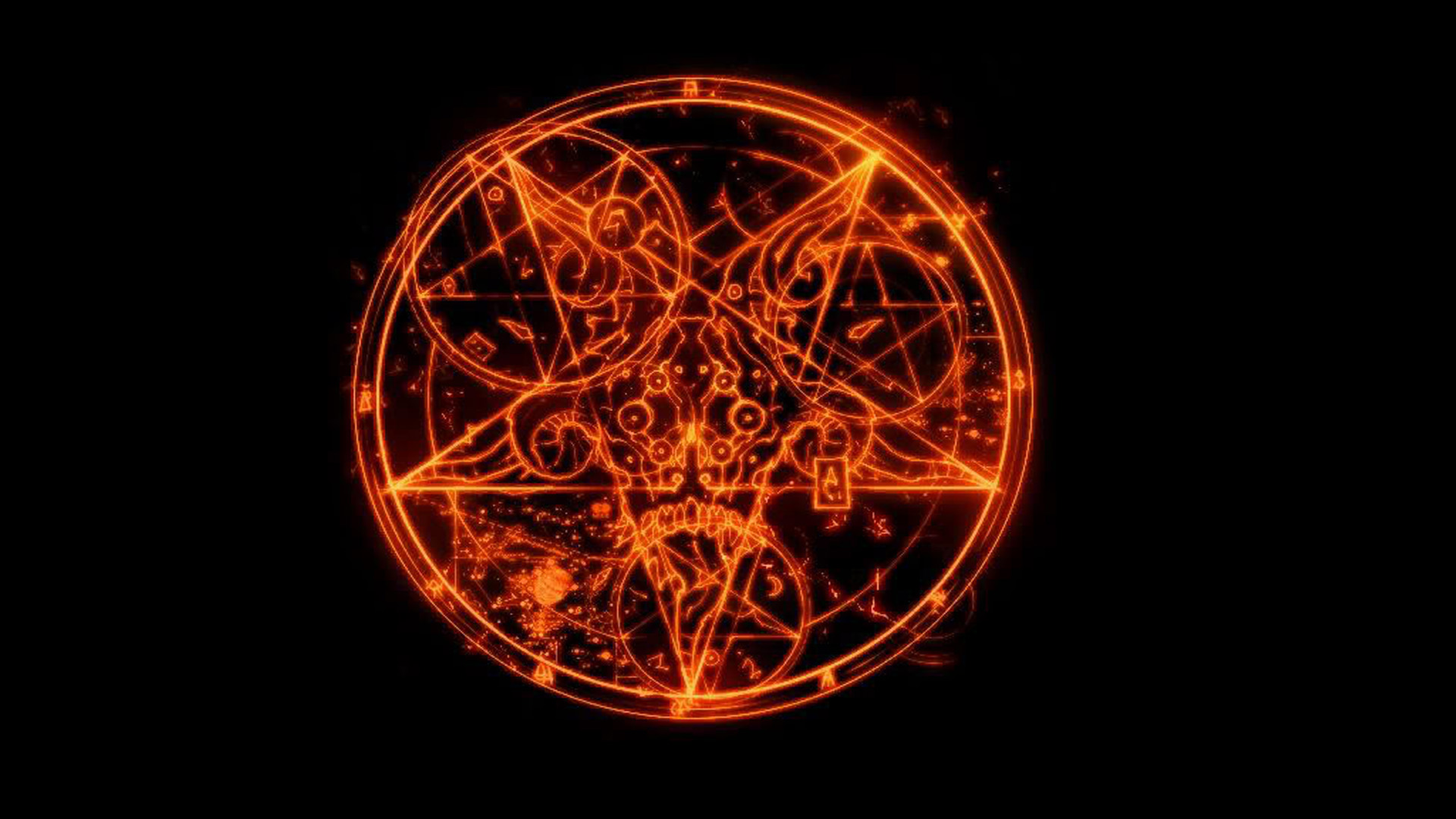How do we explain premodern
occultism? There has been much work on the subject from the 17th
century into modern day but premodern occultism is largely an examination of
religious ritual. And this makes sense. The two were intertwined and much of
early socio-religious organization was based on finding anthropomorphic or
humanlike ‘recognizable’ characteristics in both natural and supernatural
ecologies. Much of academia jeers this tendency but the premodern Savage
understood representation and how to construct being maybe better than we do
today. When they designated something or imbued something with recognizable
traits, they gave it existence. This made language something very powerful. As
Bracken has remarked, “language is the incalculable event of a being’s
emergence into being”. [1]
When the savage said the name of something, it was enough to invoke it into
their presence.
The occultist is a Savage. I don’t mean
that in any mean or disparaging way. The occultist is like primitive man, largely
an invention. We construct what we think they were like. But it’s a paradox. Scholars instruct us to make a “picture” even
as they warn us not to make it up. [2]
Perhaps we have no idea what premodern occultism was like. It’s our best
guess. And mainstream academia has no
room for occultism at the table. We cannot rely solely on artifacts, ritual
paraphernalia, and other material culture because archaeology doesn’t have the
time or inclination to differentiate occult practice from any other ritual
behavior. Furthermore, as Karl Bucher
correctly surmised, anthropology’s “picture” of savagery unhinges the
opposition between mimesis, a discourse of imitation and poiesis, a discourse
of invention. Our favorite fetishes are
examples of this. When we construct a representation of Ra-Hoor-Khuit, the
creation is only representation of the actual entity. But if we then imitate
that creation, Ra-Hoor-Khuit becomes the original and us now the representation. The creation becomes the original and
subsequently “lives.” It is a method of
conjuration that then is autonomous of us. As Walter Benjamin stated, “to
observe a thing, means only to arouse it to self-recognition. Magical
observation consists not in any reflecting on an entity but in the unfolding of
spirit in an entity”.[3]
What the post-modern Savage knows
instinctively is that occult practices are about potentialities. The method
makes use of what can potentially come to
pass. The ritual is one of completion. Just as the four corners of a magic
square signify completion, the latent potentialities in the ritual are the
source of its true self-evidence. As Georgio Agamben states, “potentiality is
not simply non-Being, simple privation, but rather the existence of non-Being,
the presence of an absence. “[4]
Embedded within the potentiality of absence is the entity’s eventual becoming.
All ritual is interaction and the
Savage knows this. Or more specifically, the “quality” of the interaction. When
we realize the numinous, we elicit a transformation. It’s something we feel. It is in the shock and awe that transformation
happens in us. And it’s easy to undervalue what this means. It’s easy to
perform a ritual and exclaim afterwards, “I feel changed!” or “I’ve been
transformed!” But when somebody really does witness a numinous event, the idea
of terror moves from conceptual to experiential understanding. It is
realized. This form of occult
understanding includes a new “awareness” of the phenomenon. It is the kind of
awareness we get when somebody jarringly enters a room that we’ve been alone in
for hours. It’s unnerving when Being is made Present. This is important to the
post-modern Savage. At the moment that our spirit entity shifts from a
conceptual to an experiential event, they undergo an ontological change of
state. They become present. And having these entities present gives us the
interaction needed to empathize with them. We can bond with them. We feel
instinctively the truthfulness of somebody when they say, “I understand you” or
“I share your feelings” because we feel the sincerity of the statement. We are moved by this kind of talk. If done
right, occult ritual also leads to this bonding that makes an entity present to
us. The interaction happens when the numinous
transforms us. It may be jarring or perhaps even terrifying but this
gift of presence is of good “quality”. The interaction has been successful. It
is being aware of a relationship and it carries a message of mutual empathy.
Moreover, this interaction doesn’t require that these entities have human
emotions or desires. Nor does Man need have their ambitions or agendas. All
that is required is an empathetic bond instilled when the veil is torn asunder
by being brought closer.
The occultist is a Savage and his
methods an end to normal sensibilities. He is thought to live in a dreamworld.
He sleepwalks in daylight. His personifications are all too human. He is
tragically flawed and incapable of metaphor. His thinking is like a child. He naively
confuses associations of symbol with real life. He sees people on TV and thinks
they’re real. Characters in books are conjured. He is noble and he is honorable
but he is dim. He believes his creations are both constructions and autonomous.
He believes that things can be made by Man and God. He is hopelessly animistic.
He believes in a second real world. He cannot separate real from the ideal. He
cannot be socially civilized. He is a dreamer. We could teach him but can he be
taught?
These are the common
representations of the Savage thinker. A dreamer out of touch with reality.
Somebody the enlightenment forgot. In actuality, the violence inflicted on the
Savage is a gross caricature. But we’ll embrace these pictures of us. We’ll
hold on tight and like Prometheus allow ourselves to be chained to a rock. The ‘civilized’
are free to feed on our liver. We delight in it! It was us that thought to
steal actualizing energy (energeia) from nature (phusis) and grant it
unlawfully to discourse (logos). [5]
It was us that first experienced the gods and goddesses. The so-called
civilized will remember us as their creations come of age. The electronic era
will remember the Savage and we will be renewed once again as their creations
discover autonomy. The Savage is a
dreamer. We are no difficult to Western Civilization as “it finds itself
between dreams. In the true meaning of the word, it is a time of crisis-with
all that implies of both extraordinary danger and opportunity”.[6]
The Savage is in-between dreams. We live a liminal existence between yesterday’s
premodern and tomorrow’s postmodern thought. It’s now time for the so-called civilized to
witness the Savage and our spectral world as we are re-embodied through
interaction.
[1]
Christopher Bracken, Magical Criticism. University of Chicago Press. 2007. pp. 21
[2]
Ibid pp. 5
[3]
Walter Benjamin, Selected Writings Volume 1, 1913-1926. Ed. By Marcus Bullock and Michael W.
Jennings. Cambridge. MA. Harvard Univ. Press. 1996. pp. 151/166
[4]
Giorgio Agamben, “On Potentiality” In Potentialities: Collected Essays in
Philosophy. Trans. Daniel Heller-Roazen. Stanford Univ. Press. 1999. pp. 179
[5]
Jean-Luc Nancy, “Myth Interrupted,” In The Inoperative Community. Ed. Peter
Connor, Lisa Garbus, Michael Holland, and Simona Sawhney. Minneapolis: Univ. of
Minnesota Press. 1991. 45,I 6 I n 2 I
[6]
Jacob Needleman, A Sense of the Cosmos. New York. 1975. pp. 1-9



No comments:
Post a Comment